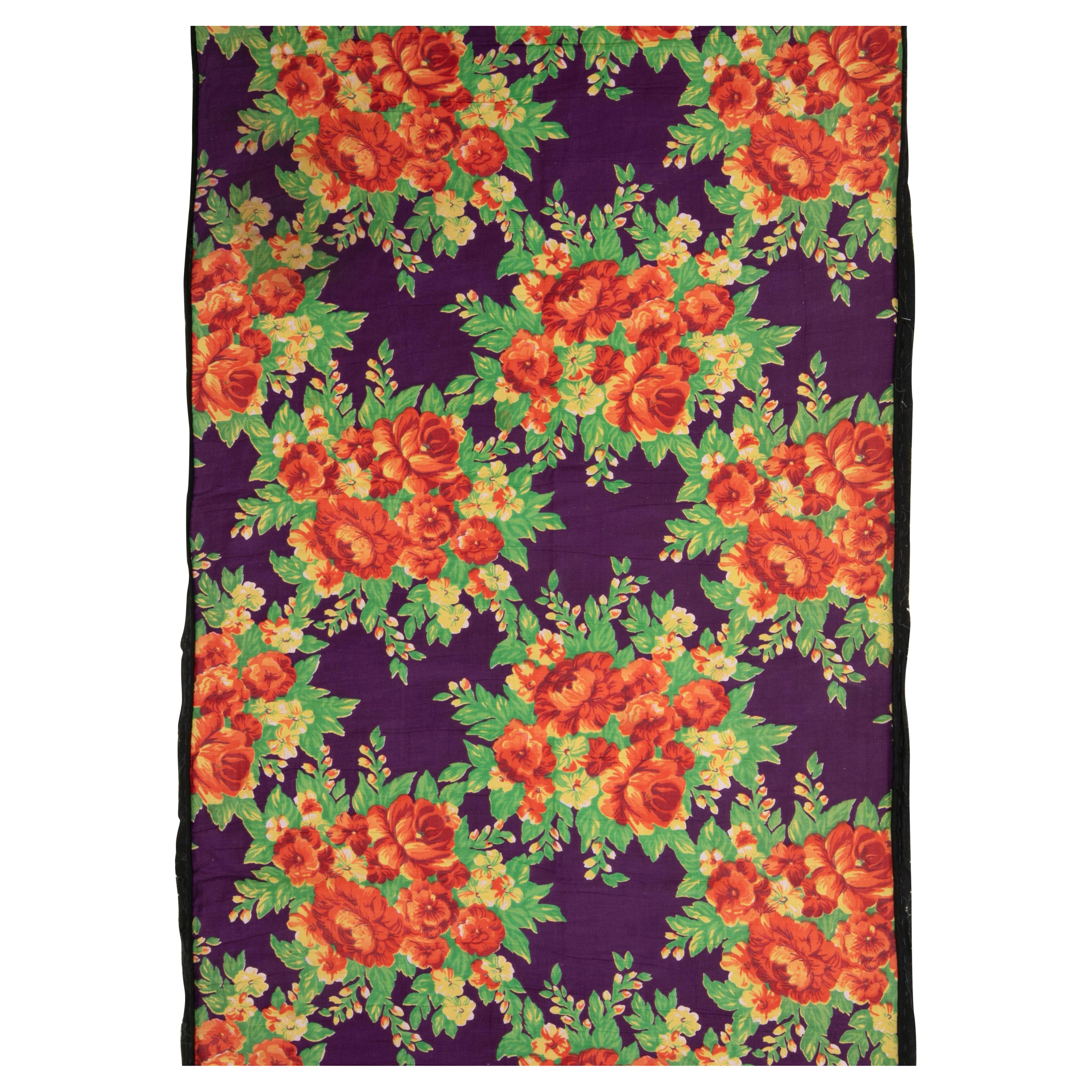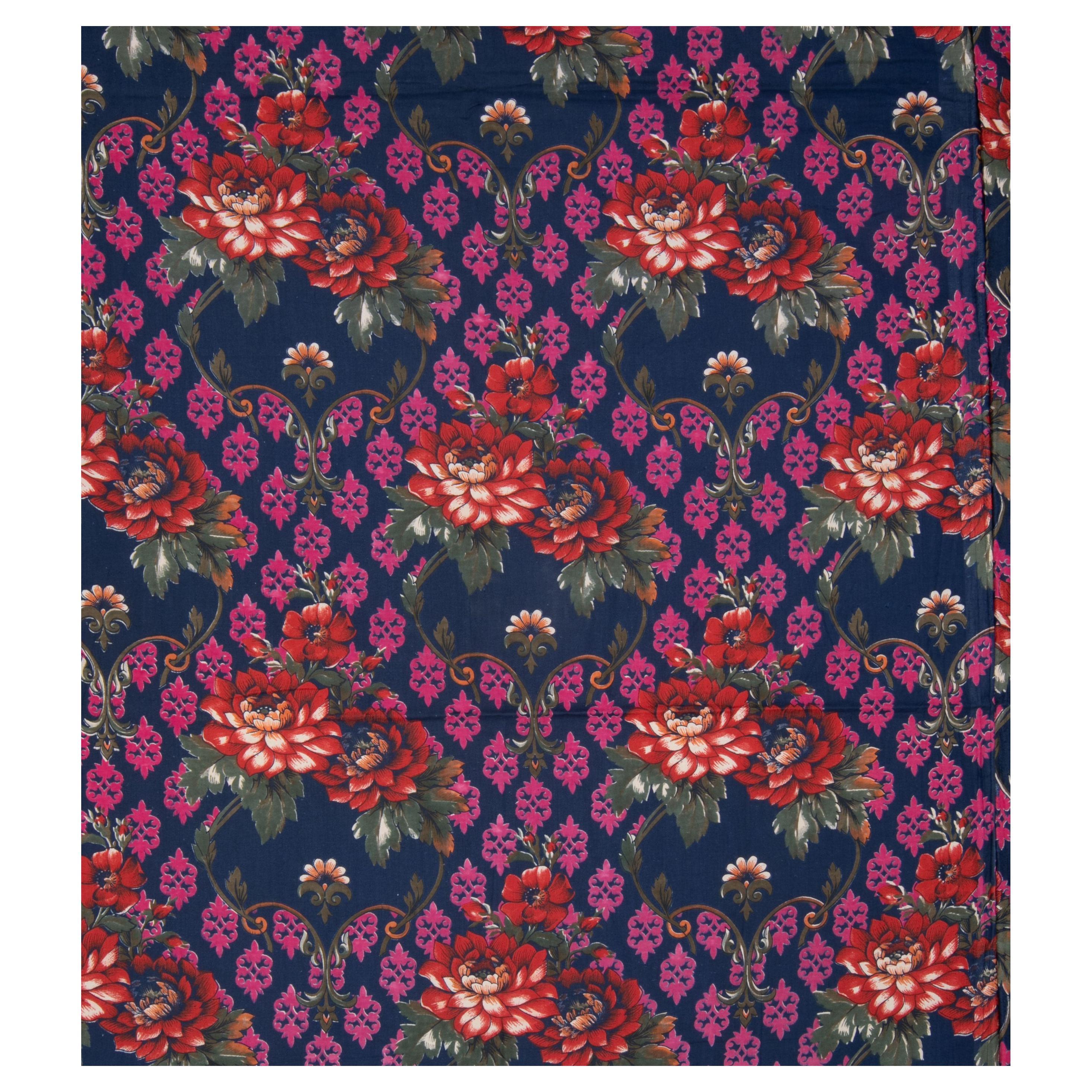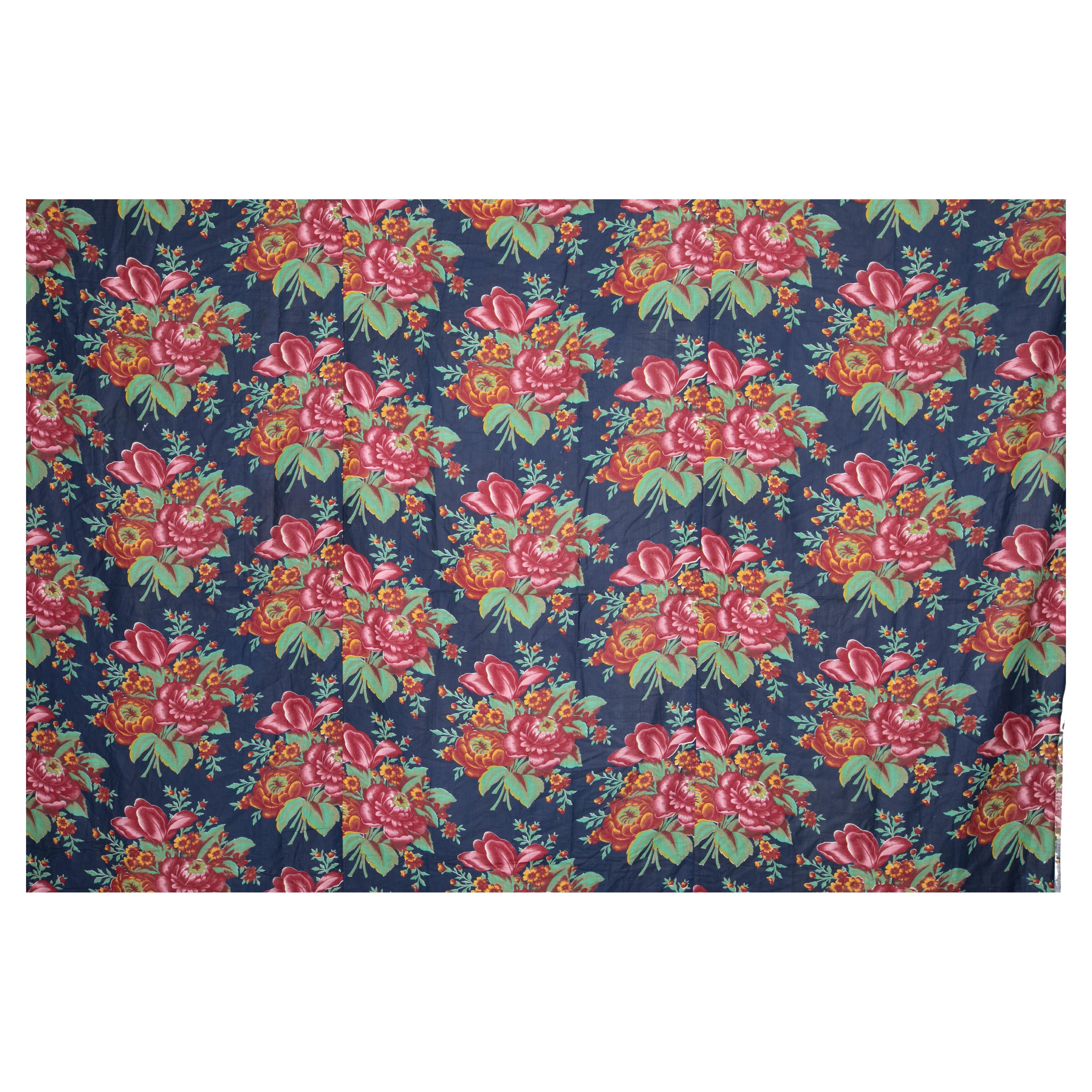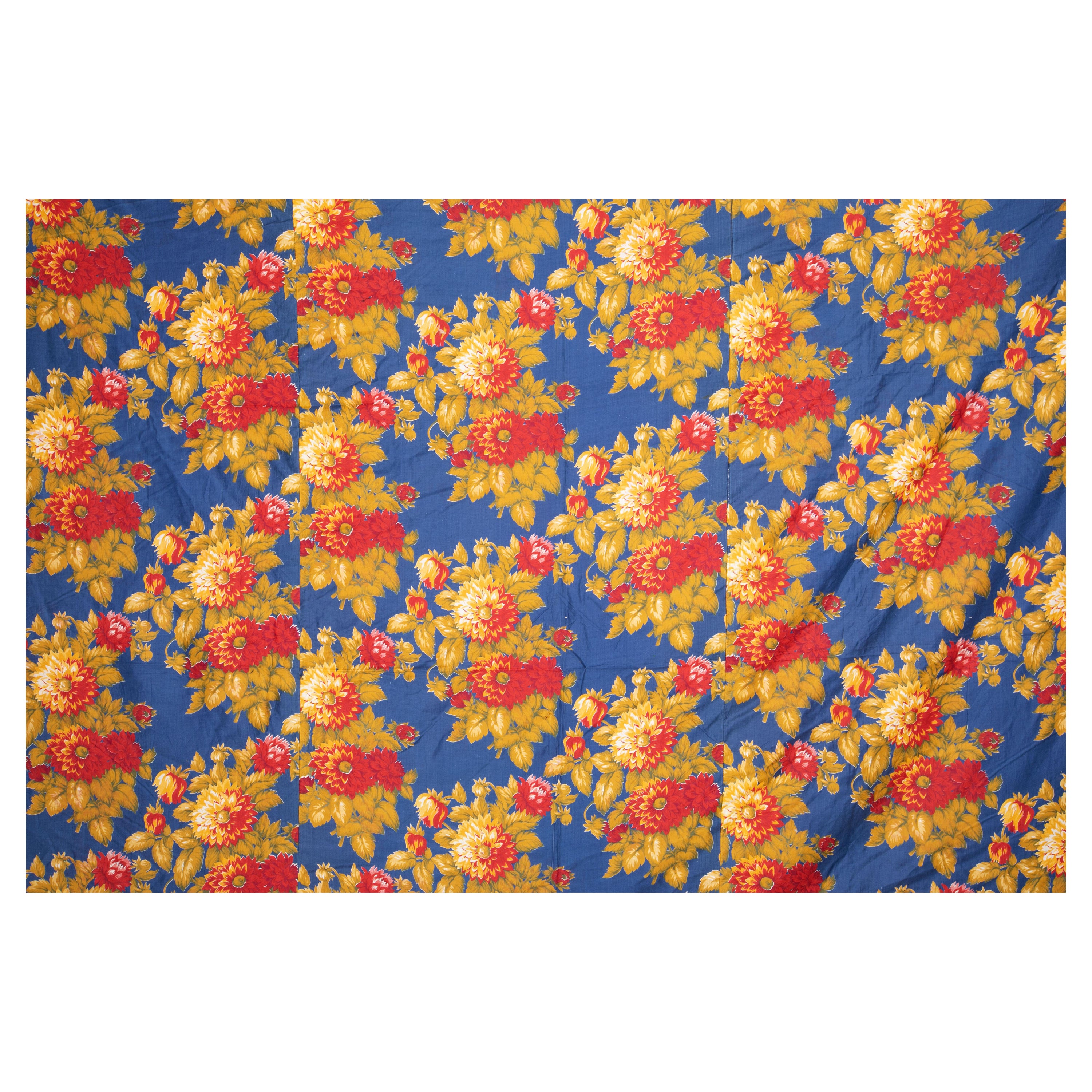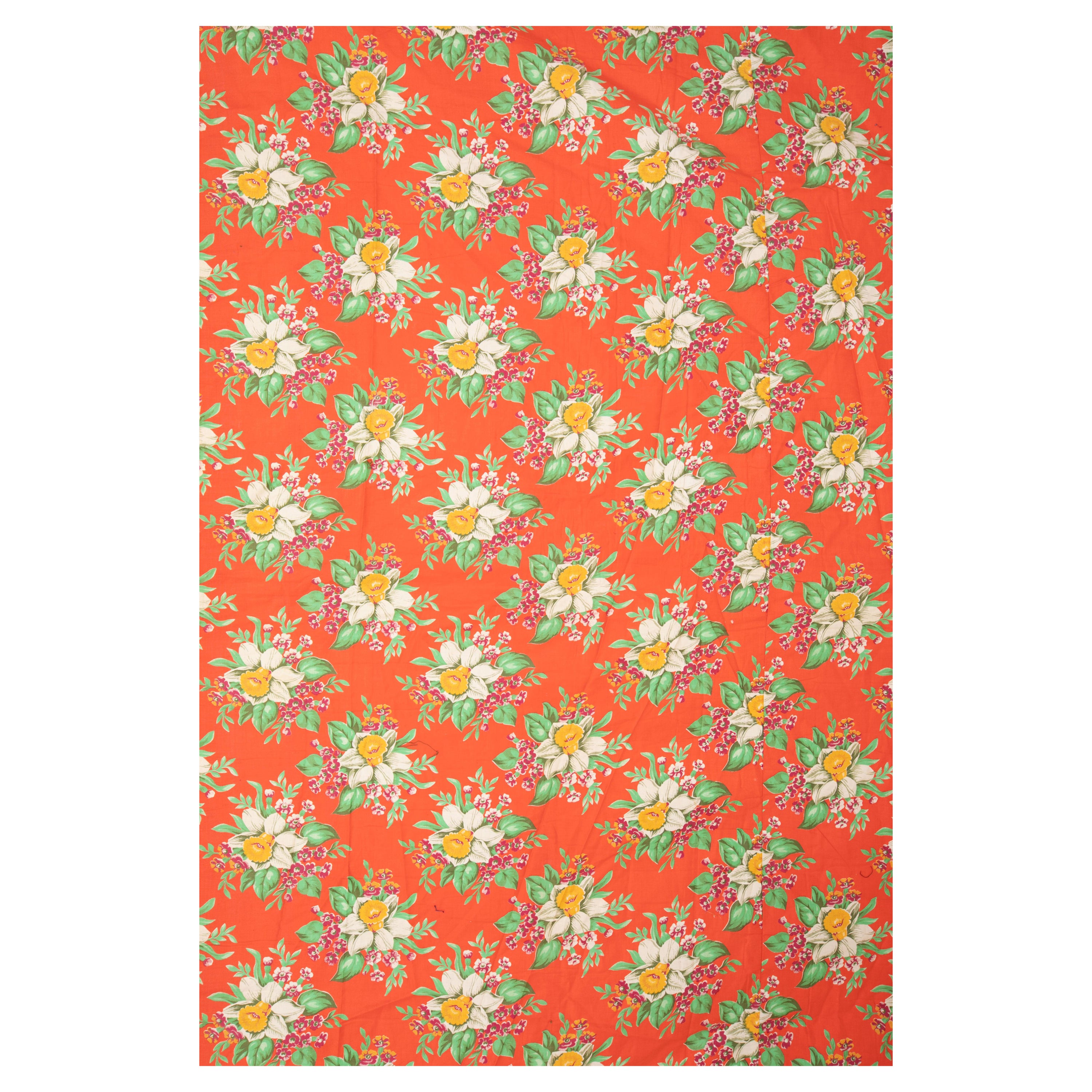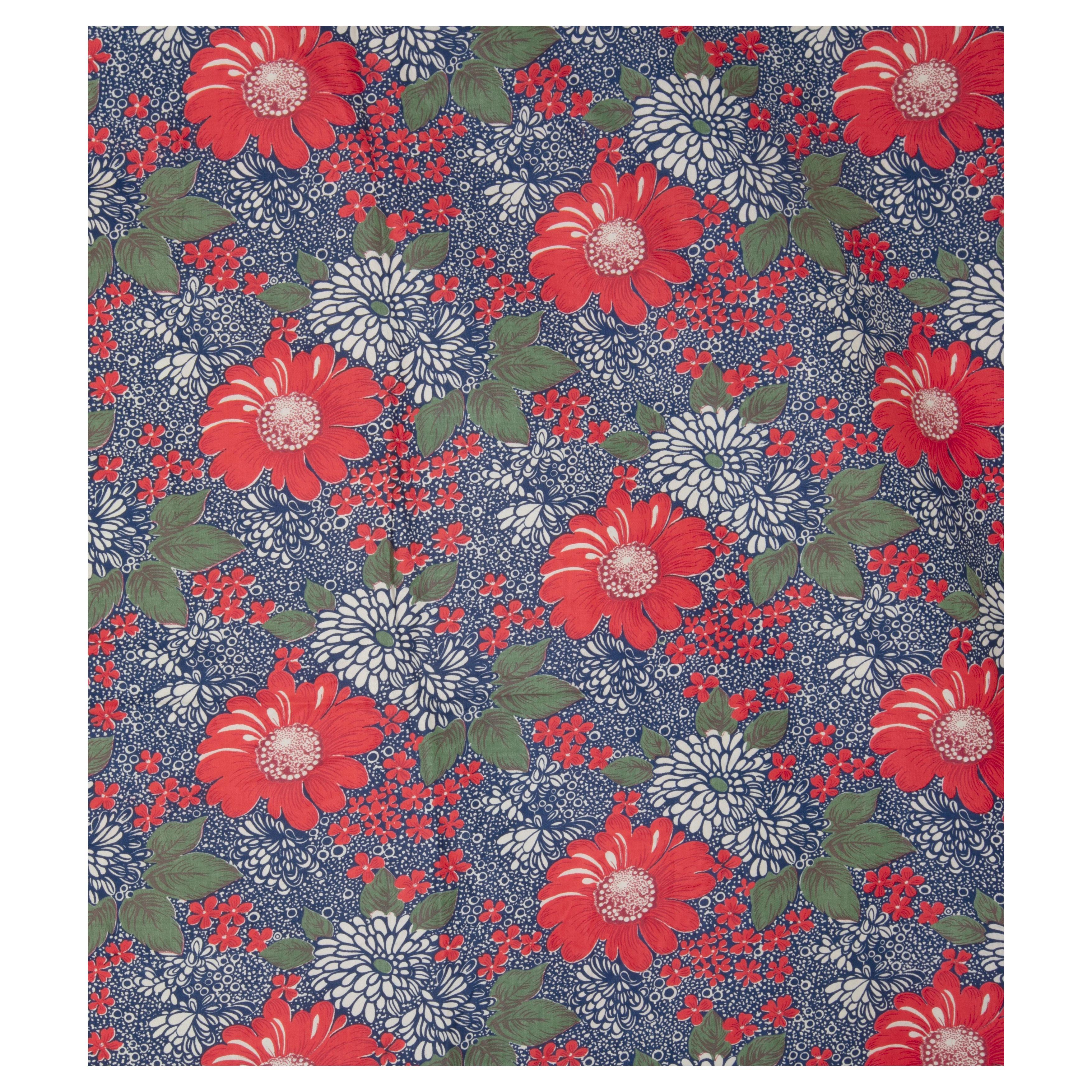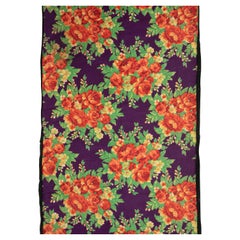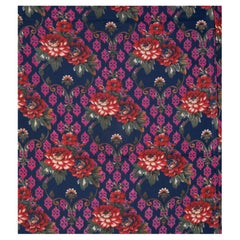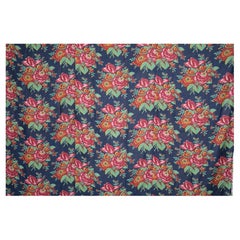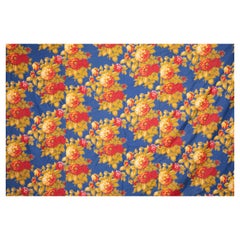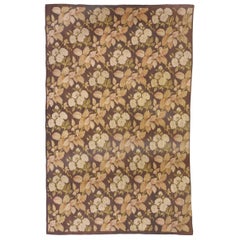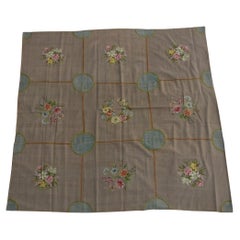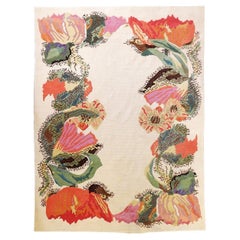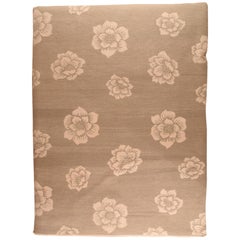Items Similar to Russian Roller Printed Cotton Fabric Panel, Mid-20th Century or Earlier
Want more images or videos?
Request additional images or videos from the seller
1 of 6
Russian Roller Printed Cotton Fabric Panel, Mid-20th Century or Earlier
$325
£249.69
€286.89
CA$457.15
A$513.59
CHF 268.35
MX$6,268.61
NOK 3,407.29
SEK 3,207.24
DKK 2,140.85
About the Item
These type of Russian prints that are also called 'trade cloth' since they were made for Central Asian markets. They were used to make blankets and dresses, and also used for the lining of ikat chapans.
- Dimensions:Width: 31.89 in (81 cm)Length: 136.23 in (346 cm)
- Style:Mid-Century Modern (Of the Period)
- Materials and Techniques:Cotton,Woven
- Place of Origin:
- Period:
- Date of Manufacture:1960s
- Condition:Wear consistent with age and use.
- Seller Location:Istanbul, TR
- Reference Number:Seller: 89961stDibs: LU1827325645982
About the Seller
4.9
Platinum Seller
Premium sellers with a 4.7+ rating and 24-hour response times
Established in 1987
1stDibs seller since 2016
1,375 sales on 1stDibs
Typical response time: 1 hour
- ShippingRetrieving quote...Shipping from: Istanbul, Turkey
- Return Policy
Authenticity Guarantee
In the unlikely event there’s an issue with an item’s authenticity, contact us within 1 year for a full refund. DetailsMoney-Back Guarantee
If your item is not as described, is damaged in transit, or does not arrive, contact us within 7 days for a full refund. Details24-Hour Cancellation
You have a 24-hour grace period in which to reconsider your purchase, with no questions asked.Vetted Professional Sellers
Our world-class sellers must adhere to strict standards for service and quality, maintaining the integrity of our listings.Price-Match Guarantee
If you find that a seller listed the same item for a lower price elsewhere, we’ll match it.Trusted Global Delivery
Our best-in-class carrier network provides specialized shipping options worldwide, including custom delivery.More From This Seller
View AllRussian Roller Printed Cotton Fabric Panel, Mid-20th Century or Earlier
Located in Istanbul, TR
These type of Russian prints that are also called 'trade cloth' since they were made for Central Asian markets. They were used to make blankets and dresses, and also used for the lin...
Category
Mid-20th Century Russian Mid-Century Modern Russian and Scandinavian Rugs
Materials
Cotton
Russian Roller Printed Cotton Fabric Panel, Mid-20th Century or Earlier
Located in Istanbul, TR
These type of Russian prints that are also called 'trade cloth' since they were made for Central Asian markets. They were used to make blankets and dresses, and also used for the lin...
Category
Mid-20th Century Russian Mid-Century Modern Russian and Scandinavian Rugs
Materials
Cotton
Russian Roller Printed Cotton Fabric Panel, Mid-20th Century or Earlier
Located in Istanbul, TR
These type of Russian prints that are also called 'trade cloth' since they were made for Central Asian markets. They were used to make blankets and dresses, and also used for the lin...
Category
Mid-20th Century Russian Mid-Century Modern Russian and Scandinavian Rugs
Materials
Cotton
Russian Roller Printed Cotton Fabric Panel, Mid-20th Century or Earlier
Located in Istanbul, TR
These type of Russian prints that are also called 'trade cloth' since they were made for Central Asian markets. They were used to make blankets and dresses, and also used for the lin...
Category
Mid-20th Century Russian Mid-Century Modern Russian and Scandinavian Rugs
Materials
Cotton
Russian Roller Printed Cotton Fabric Panel, Mid-20th Century or Earlier
Located in Istanbul, TR
These type of Russian prints that are also called 'trade cloth' since they were made for Central Asian markets. They were used to make blankets and dresses, and also used for the lin...
Category
Mid-20th Century Russian and Scandinavian Rugs
Materials
Cotton
Russian Roller Printed Cotton Fabric Panel, Mid-20th Century or Earlier
Located in Istanbul, TR
These type of Russian prints that are also called 'trade cloth' since they were made for Central Asian markets. They were used to make blankets and dresses, and also used for the lin...
Category
Mid-20th Century Mid-Century Modern Russian and Scandinavian Rugs
Materials
Cotton
You May Also Like
Late 19th Century East European Bessarabian Rug
Located in New York, NY
Late 19th Century East European Bessarabian Rug
Handwoven
East Europe ca. 1880
13'11" x 8'0" (424 x 244 cm)
Category
Antique Late 19th Century Ukrainian Bessarabian Russian and Scandinavian...
Materials
Wool
1920s Antique Needlepoint Rug - 6'7'' X 6'5''
Located in Los Angeles, US
Needlepoint rugs were created using the traditional needlework weaving technique that is used to make everyday items from furniture to carpets and artwork. However, it has a fascinating history both as a hobby and as an industry. When many people think of carpets, they think of pile carpets or flat weave kilims, but needlepoint has also been used to create beautiful carpets. These carpets are durable and an important part of carpet history.
Archaeologists and scholars consider the roots of needlepoint to have been around 1500 BC. They consider the first needlepoint to include the fine diagonal stitches that were used to sew tents together by the ancient Egyptians. The art eventually evolved into tapestry weaving. However, a tapestry weaving differs significantly from needlepoint in that it uses a loom and vertical warp.
Tapestry weaving is closer to the weaving of kilims and pile rugs than canvas work. However, some still include tapestry weaving in the category of needlepoint because of the fine work that appeared during the late Renaissance. It can have a similar appearance to the untrained eye. Technically, tapestry weaving and needlepoint are not the same, and they do not use the same technique.
The first actual needlepoint rugs and needle-points began to appear in the late Renaissance. Needlepoint is worked by creating stitches on a stiff canvas. The canvas is typically made from jute or linen and is quite durable. Pieces from the Renaissance were used to cover footstools, chairs, pillows, bed headboards, and other furnishings. They were also used as table coverings and wall coverings. You could also find them on many small items such as purses, shoes, and various adornments for clothing.
During the Renaissance, the craft reached a high level of skill, and the designs became incredibly detailed and realistic. They mimicked many of the subjects and styles of famous paintings of the time. They created florals, still life designs, scenes, and geometric tiled pieces. Some of them mimicked the designs found in Persian Carpets.
Needlepoint reached its peak popularity in the 19th century when it was considered a proper occupation for a lady. Needlepoint and embroidery held a similar place in societal status at the time. During this time, the work became finer, with some of the canvas reaching a high level of detail. The level of detail is determined by counting the number of mesh in an inch. During this time petit point by French needlewomen could have a mesh count as high as 45 mesh. This allowed women to create highly intricate designs with incredible levels of detail.
It is possible to find many antique pieces of needlepoint besides rugs. Needlepoint rugs were popular in France and Spain, where the technique was adapted to create highly intricate designs that mimicked the designs in architecture and fashion. They were popular because they were durable, and it could be fashioned into a variety of items. The canvases themselves were durable, and the wool that they used was also strong, which means that many of the pieces were able to withstand daily use. We have many artifacts that have survived from this time period.
Needlepoint rugs are important collectibles because they are different from the pile rugs and kilims that are typically found on the market. Needlepoint carpets are special because they take many hours to create, especially larger works. Needlepoint pieces of any type became popular throughout Europe during the 19th century. It is still a popular hobby today, but perhaps one of the most interesting stories is that of the Portuguese needlewomen of Arraiolos.
The story of these women and their beautiful carpets begins in 1492. Needlepoint was a popular occupation in Spain, which had a large population of Moors and Jews. They were an integral part of Spanish culture. However, in 1492, Queen Isabella of Spain issued a proclamation that gave these ethnic groups the order to pack their bags and board ships headed...
Category
Vintage 1920s Other Russian and Scandinavian Rugs
Materials
Wool
Vintage Floral Wool Rugs - 174cmx247cm
Located in Uccle, BE
Vintage Floral Wool Rugs - 174cmx247cm
Category
20th Century European Mid-Century Modern Western European Rugs
Materials
Wool
Indian Sumak Manchoria Rug 10' x 14'
Located in New York, NY
Indian Sumak Manchoria Rug 10' x 14'.
Category
21st Century and Contemporary Chinese Sumak Chinese and East Asian Rugs
Materials
Wool, Cotton
$2,240 Sale Price
72% Off
Tule, 'Flower Field' Rug
Located in Long Island, NY
Tuleh - 'Flower Field'Â Rug 8' x 10'
Material: 90% Wool 10% Silk
"Tuleh’s strength and clarity of design is interpreted with alacrity in all of the hand knotted Via Como, wheth...
Category
Vintage 1980s Unknown Other Central Asian Rugs
Materials
Wool, Silk
$19,200 Sale Price
20% Off
Vintage Scandinavian Textile. 4 ft 2 in x 5 ft 8 in
Located in New York, NY
Vintage Scandinavian Textile, Scandinavia, Circa: Mid-Twentieth Century – Size: 4 ft 2 in x 5 ft 8 in (1.27 m x 1.73 m)
Category
Mid-20th Century Swedish Scandinavian Modern Russian and Scandinavian Rugs
Materials
Wool
More Ways To Browse
Ikat Print
Russian Antique Mirror
Brita Vintage
Nordic Knots Dusty White
Swedish Rug By Marianne Richter
Bessarabian Runner
Agda Osterberg
Mughal Shield
Nordic Knots Grid Rug
Rya Rug Marta
4 X 6 Swedish Rug
Nordic Knots Stripes
Swedish Rug 6 X 9
Russian Bokhara Rugs
Swedish Flossa Rug
Alice Walleback
Salerno Barbro Nilsson
Josef Frank Rug
